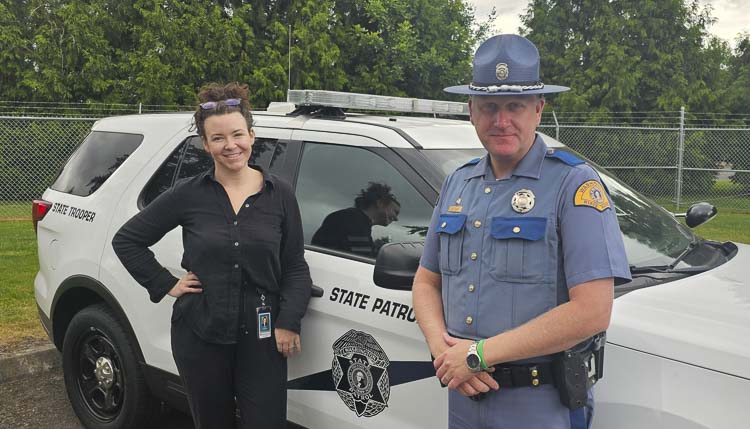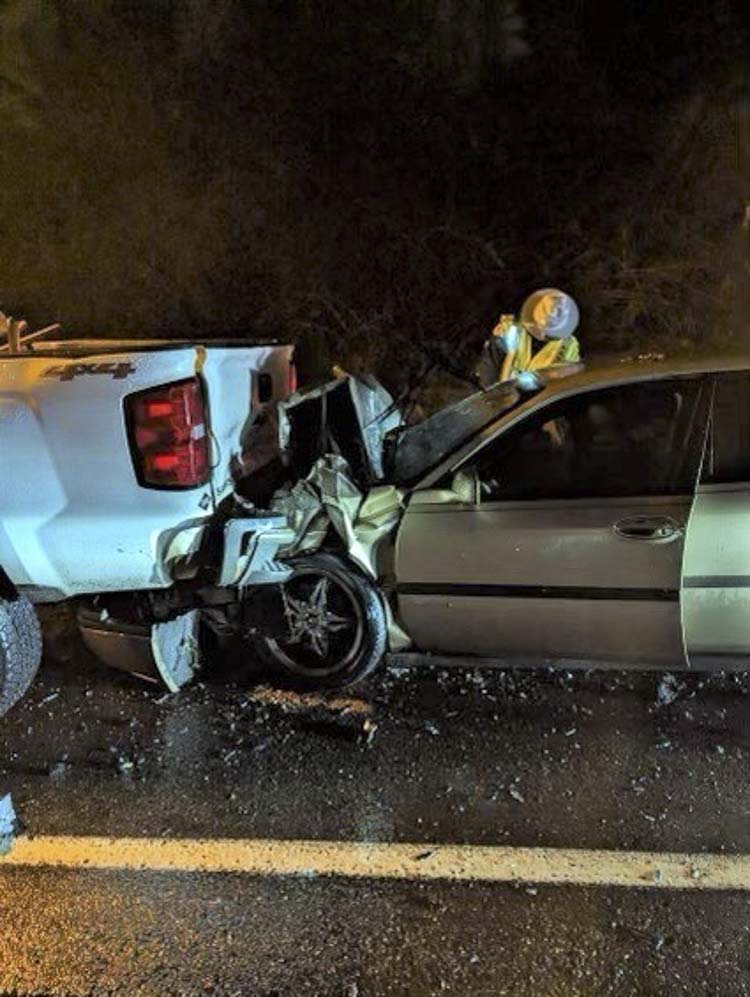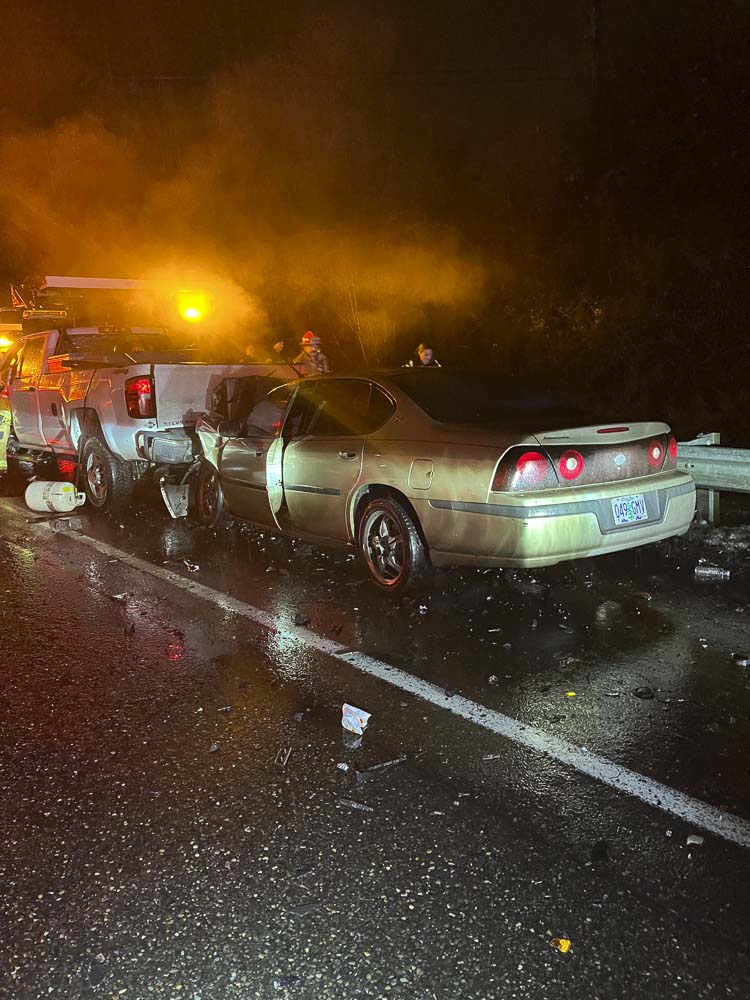
Eight WSDOT workers have been hospitalized this year in this region from being hit on roadways, and that number should be zero
Paul Valencia
ClarkCountyToday.com
Their voices are strong, forceful.
They implore people to heed their advice.
This is a life-or-death situation.
They want everyone to come home safely, every day: The work zone personnel, the Washington State Department of Transportation incident response team, law enforcement officials, and the driving public.
Everyone.
Coming into a construction zone? Reduce your speed.
See emergency vehicles? Reduce your speed.
“Slow down, move over, give us room to work,” said Trooper Will Finn, the public information officer for Washington State Patrol, District 5.
“To move over is the law,” said Kelly Hanahan, acting communications manager for the Southwest Region of the Washington State Department of Transportation.
“It’s. … The. … Law,” she emphasized, speaking deliberately. “We’re not asking people to do anything that already isn’t the law, and this is why.”
This year, eight WSDOT workers in Southwest Washington have been struck by vehicles driven by impaired, distracted, or speeding drivers in work zones, including six in one frightening incident in January.

Now in the summer months, well into Construction Season in Washington, and Target Zero is looking to get the word out.
See the orange cones? See the yellow lights? See the blue lights? Slow down and move over.
“And that law has been improved over the last few years,” Finn said. “It used to be just move over, and now it’s move over and slow down 10 miles below the speed limit.”
Target Zero is the Washington state campaign with a goal to have zero traffic deaths on Washington’s roads and highways by 2030. This month, one of the campaign’s emphasis is on work zone safety.
It should be noted, Hanahan said, that work crews are out there every day of the year. Not just in the summer. They respond to incidents or they might have to make an emergency repair.
There are big, planned construction zones, such as the one happening now on Washington State Route 14 in east Vancouver that have plenty of warning signs and orange cones in place to advise motorists in an effort to keep the work crew safe.
But there are also a number of temporary work zones, which can be for emergency repairs or law enforcement activity.
An ice storm in January caused tremendous damage to Interstate 5. WSDOT officials sent a team for an emergency pothole repair.
“They had just pulled over to the shoulder and had been there for 90 seconds before a drunk driver struck one DOT vehicle so hard that the vehicle then struck another DOT vehicle in front of it, sending six workers to the hospital,” Hanahan said.
“Some of the most vulnerable people are the ones who work on our roadways, first responders, people who are pulling up to respond to something, like a mobile operation where our maintenance crews are responding to an urgent need,” she added.

In 2023, WSDOT vehicles were struck 16 times in the Southwest region.
While crew members are in dangerous positions, often out in the open, it turns out that more than 90 percent of fatalities in work zone crashes are to the driving public, Hanahan said.
“We constantly remind people that … you’re not just risking the lives of our workers, people who you don’t know, you’re actually risking the lives of yourselves,” Hanahan said.
Many of these crashes are caused by impaired drivers. That is another point of emphasis for the Washington State Patrol.
“What we’re really advocating for is, don’t put anything into your body that’s going to impair your ability to operate a motor vehicle safely,” Finn said.
Another horror story from February: A drunk driver going the wrong way on I-5 struck and killed a person. State patrol and WSDOT incident response team arrived on scene. Within minutes, another drunk driver hit the incident vehicle, sending a WSDOT employee to the hospital. Another driver who stopped to ask what was going on was arrested for DUI.
“Three DUIs in one incident, one person died, and a DOT worker goes the hospital,” Finn said.
The temporary work zones — for crashes or emergency repairs — do not always allow for early warnings for the driving public well in advance of the zones. Which is why drivers need to stay alert for flashing blue or yellow lights.
For the planned, long-term construction projects, Washington State Patrol and WSDOT work together to come up with the advance warnings, with signage and cones and sometimes, concrete barriers. When crashes occur anyway, they meet to to see if they can do more. Should the speed limit be lowered? Should there be more warnings?
Another tip for the driving public is to be aware of any construction projects along your route before you even get in your car. If you have to be at Point A by a certain time, leave earlier if you know you are going to be slowed in a construction zone.
“There’s an impatience that comes when you enter a construction zone. People need to understand that this is important work that is being completed out there on the highway,” Finn said. “This is your tax dollars at work.”
A better understanding of that, as well as giving yourself extra time to make it to your appointment, for example, could help relieve the stress of being slowed in a construction zone.
For contracted construction workers, for Department of Transportation employees, for law enforcement officers, every assignment on a freeway or highway has its risks.
Target Zero wants to decrease those risks by asking the driving public to do the right thing in work zones.
Slow Down.
Move Over.
It. Is. The. Law.
And it will save lives.
Also read:
- Opinion: Schools notifying parents about the kinds of care kids can decide on their own didn’t make itElizabeth New criticizes the removal of Amendment 1164 from current legislation, arguing it leaves parents uninformed about health care services accessed by their children through schools.
- Ridgefield School District invites community to help shape new Strategic PlanRidgefield School District is hosting three public sessions to gather community input for its new Strategic Plan.
- Julianne Lawrence is first paid director of Two Rivers Heritage MuseumJulianne Lawrence has been appointed the first paid director of the Two Rivers Heritage Museum following a strategic effort by the Camas-Washougal Historical Society.
- Foundation for Vancouver Public Schools breaks ground on new building to support construction trades at Fort Vancouver High School with the Ed and Dollie Lynch FundFort Vancouver High School will soon be home to a donor-funded trades center focused on welding and advanced manufacturing education.
- Save Vancouver Streets has its day in court, waits on rulingSave Vancouver Streets went to court to argue that the city must allow its initiative to proceed after collecting more than 6,500 signatures.
- Opinion: Off-road vehicles in the neighborhoodDoug Dahl responds to a resident’s concern about off-road vehicles on neighborhood streets, outlining the legal violations and safety risks involved.
- IBR only has single firm interested in managing the project to replace I-5 BridgeRep. John Ley reports on serious concerns with the I-5 Bridge replacement project, including limited contractor interest, rising tolls, and a 15-year timeline.











